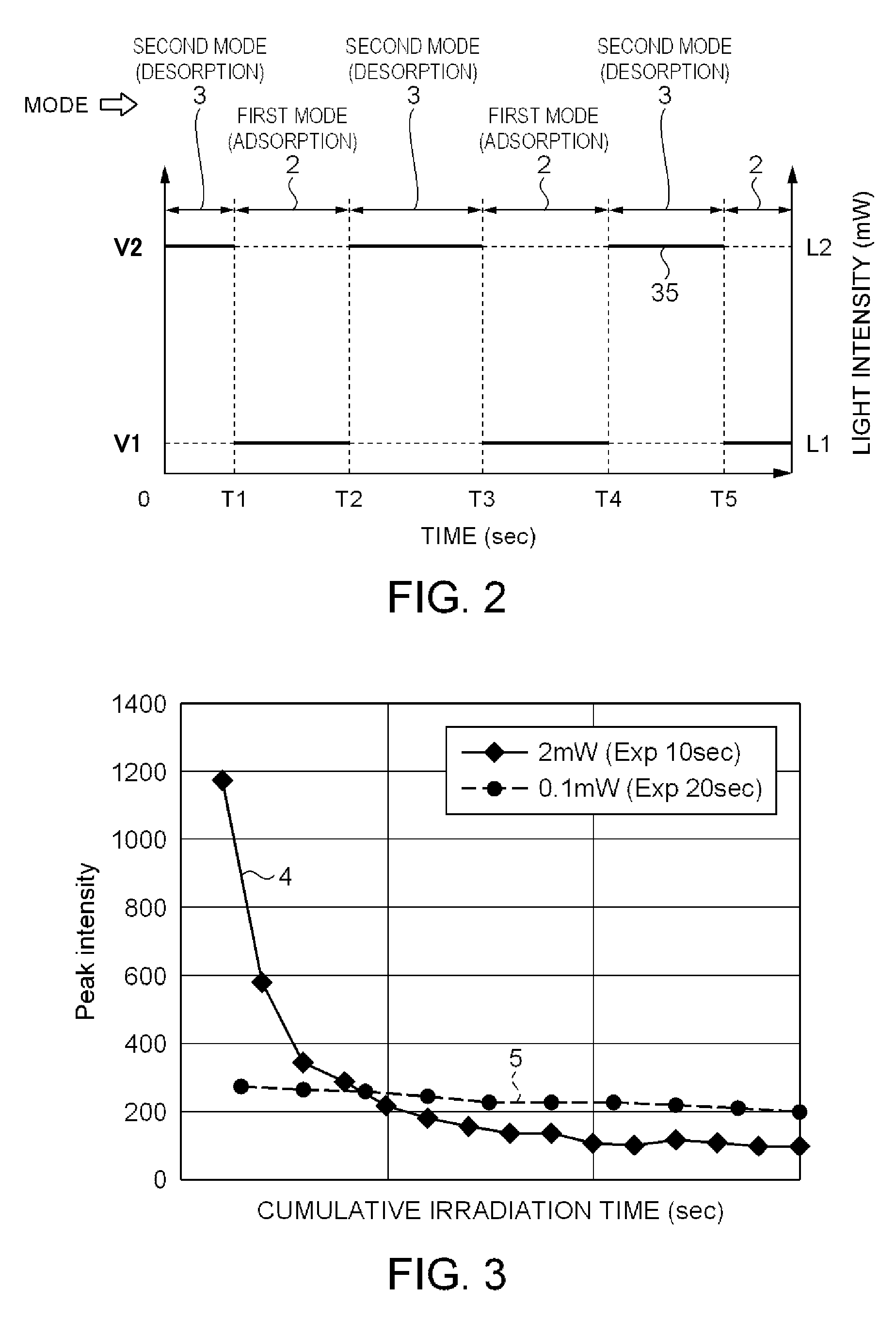Detection device
- Summary
- Abstract
- Description
- Claims
- Application Information
AI Technical Summary
Benefits of technology
Problems solved by technology
Method used
Image
Examples
embodiment
1. Basic Configuration of Detection Device
[0050]FIG. 1 is a block diagram showing a configuration of the detection device according to the present embodiment. As shown in FIG. 1, the detection device 10 has a sensor chip (an optical device) 20, a suction section 40, a light source 50, a light detection section 60, a control section 71, and a light intensity adjustment section 290. Between the sensor chip 20 and the light source 50, and between the sensor chip 20 and the light detection section 60, there is disposed an optical system 30. In the present embodiment, the fluid sample is, for example, air, and the inspection target material can be set to specific gas molecules (sample molecules) in the air, but is not limited thereto.
[0051]The suction section 40 is provided with a negative pressure generation section, for example, a fan 450, and sucks the fluid sample. The negative pressure generation section is not limited to the fan, but is only required to be what can generate a negat...
modified examples
5. Modified Example Using Reference Molecules In Combination
[0086]Then, one modified example of the detection device as an embodiment of the invention will be explained with reference to FIGS. 13 through 18. The present modified example is different from the embodiment described above in the point that a reference molecule storage chamber is provided. It should be noted that the explanation on the point the same as in the embodiment described above will be omitted.
5.1. Overall Structure
[0087]It is assumed that TNT molecules as component molecules of an explosive are detected as the inspection target material in, for example, a port or a harbor. In normal cases, the TNT molecules do not exist in the air. Therefore, if the detection along the method of the embodiment described above taking the TNT molecules as the sample molecules, it takes eternity to end the first mode (the adsorption mode). This is because there is high probability that in normal cases the SERS intensity of the TNT...
second experimental example
5.2. Second Experimental Example
[0094]FIG. 17 is a graph for explaining the first mode and the second mode. As shown in FIG. 17, an experiment has been conducted along the switching lines 25 of performing the first mode 2 (the adsorption mode) and the second mode 3 (the desorption mode) alternately. It should be noted that the sample molecules 1 as the inspection target material are not particularly assumed in the second experimental example. As the light source 50, a He—Ne laser with the excitation wavelength of 632.8 nm, and the intensity of 2 mW is used. As the material of the sensor chip 20, Ag is adopted. In the first mode 2 (the adsorption mode), the fluid transport rate W1 of the fan 450 is set to 20 ml / min, the excitation light intensity L1 is set to 0.1 mW on the sensor chip 20, and the measurement exposure time in the light detection section 60 is set to 20 seconds. In the second mode 3 (the desorption mode), the fluid transport rate W2 of the fan 450 is set to 200 ml / min,...
PUM
 Login to View More
Login to View More Abstract
Description
Claims
Application Information
 Login to View More
Login to View More - R&D
- Intellectual Property
- Life Sciences
- Materials
- Tech Scout
- Unparalleled Data Quality
- Higher Quality Content
- 60% Fewer Hallucinations
Browse by: Latest US Patents, China's latest patents, Technical Efficacy Thesaurus, Application Domain, Technology Topic, Popular Technical Reports.
© 2025 PatSnap. All rights reserved.Legal|Privacy policy|Modern Slavery Act Transparency Statement|Sitemap|About US| Contact US: help@patsnap.com



